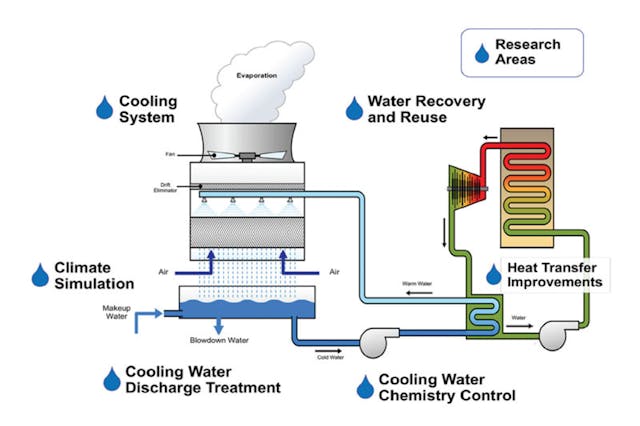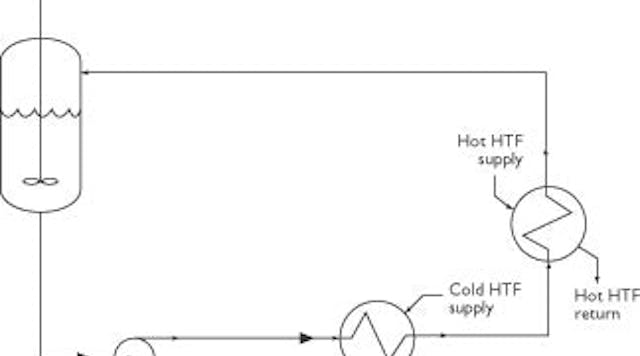The Duty of Heat Transfer Solutions in Sustainable Energy Solutions for the Future
Heat transfer systems are crucial in the quest for lasting power remedies. They optimize thermal power administration, boosting the effectiveness of sustainable modern technologies. By using systems like conduction, radiation, and convection, these systems minimize energy losses. Their function in solar thermal and geothermal applications is especially substantial. As technologies arise, the potential for additional innovations raises important questions regarding future energy methods. What developments will form the landscape of sustainable energy?
Recognizing Heat Transfer Equipments

The Significance of Thermal Energy Monitoring
Efficient thermal power management is essential for optimizing energy effectiveness and minimizing waste in different systems. By controling temperature level and enhancing Heat transfer procedures, companies can substantially reduce energy consumption and operational prices. Efficient management entails the execution of innovative innovations and methods that keep track of and manage thermal conditions within systems, making certain that energy resources are utilized successfully. Furthermore, proper thermal energy administration adds to decreasing greenhouse gas emissions, straightening with worldwide sustainability goals. It additionally boosts system reliability and performance, leading to boosted product quality and longer tools life-span. Ultimately, prioritizing thermal energy monitoring is a vital step towards creating much more lasting energy services and fostering an accountable strategy to energy intake in industrial and domestic contexts.
Applications of Heat Transfer in Renewable Resource
While different sustainable energy sources promise sustainability, the efficient application of Heat transfer plays a necessary function in their efficiency. In wind energy systems, Heat transfer is made use of for generator component cooling, enhancing performance and long life. Geothermal power relies upon efficient Heat exchange in between the planet's subsurface and the fluid circulating in the system, maximizing energy extraction. Biomass power procedures likewise take advantage of Heat transfer, as it assists in converting organic materials right into functional fuel through pyrolysis and gasification. Additionally, in hydropower, maintaining ideal temperature levels in storage tanks can boost energy output. Each of these applications shows the critical value of Heat transfer systems in boosting eco-friendly energy modern technologies, ultimately adding to a much more lasting energy future.
Enhancing Solar Thermal Power Efficiency
As solar thermal power systems continue to progress, enhancing their performance has ended up being important for maximizing power output. Developments in Heat transfer innovations, such as enhanced thermal storage materials and innovative Heat exchangers, play a significant duty in enhancing efficiency. By utilizing innovative materials that have premium thermal conductivity, systems can transfer and capture Heat a lot more effectively. Furthermore, incorporating radar that comply with the sunlight's path warranties that enthusiasts obtain excellent solar direct exposure throughout the day. Making use of nanotechnology in solar absorbers can even more boost power absorption rates. Incorporating automatic control systems aids regulate temperatures and manage energy distribution efficiently, leading to decreased losses and enhanced overall system effectiveness. These improvements lead the way for even more lasting solar thermal energy services in the future.
Geothermal Home Heating: A Lasting Remedy
Geothermal home heating offers a sensible choice for lasting power, supplying substantial ecological advantages via decreased greenhouse gas exhausts. Its efficiency and cost-effectiveness make it an attractive alternative to conventional heating unit. However, obstacles associated to application needs to be dealt with to maximize its possible influence.
Environmental Advantages of Geothermal
Although standard home heating techniques add substantially to greenhouse gas exhausts, geothermal heating offers a compelling option that reduces ecological impact. By harnessing the Earth's internal Heat, geothermal systems make use of a renewable resource source, markedly reducing reliance on nonrenewable fuel sources. This technique creates minimal carbon discharges, making it a cleaner alternative for domestic and business heating. Furthermore, geothermal systems promote energy effectiveness, as they require much less energy compared to traditional furnace. DVS Heat Transfer Systems. The usage of geothermal power also assists in decreasing air contamination, enhancing regional air top quality and public health. As a lasting remedy, geothermal heating supports climate change mitigation efforts, positioning itself as a crucial component in the shift towards a greener future
Performance and Cost-Effectiveness
Just how does geothermal heating measure up in terms of performance and cost-effectiveness contrasted to typical heating unit? Geothermal heating company website demonstrates superior performance, frequently accomplishing a coefficient of efficiency (COP) of 3 to 5, meaning it creates 3 to 5 devices of Heat for each system of electrical energy eaten. This performance equates right into reduced operating expense, particularly in areas with secure geothermal sources. First setup expenses can be greater than conventional systems; however, lasting cost savings on power costs and lowered maintenance expenses can counter these in advance investments. Additionally, lots of federal governments incentivize geothermal systems with rebates and tax obligation credit scores, enhancing their cost-effectiveness. On the whole, geothermal home heating becomes a sustainable and economically viable alternative to even more conventional home heating remedies.
Execution Difficulties and Solutions
Numerous difficulties can impede the widespread implementation of geothermal heating unit, regardless of their clear advantages as a lasting energy solution. High first installation expenses frequently hinder homeowners and financiers, making funding a considerable obstacle. Additionally, the geographical restrictions of ideal geothermal sites restrict accessibility in specific areas. Neighborhood guidelines and allowing procedures can additionally make complex project development, bring about delays. Furthermore, public awareness and understanding of geothermal systems stay low, impeding approval. To attend to these challenges, targeted education and learning campaigns can boost public expertise, while government incentives can reduce financial problems. Working together with neighborhood authorities to improve policies may assist in smoother task authorizations, eventually advertising the adoption of geothermal heating as a viable, sustainable power alternative.
Developments in Heat Transfer Technologies
Developments in Heat transfer technologies play a vital role in enhancing energy effectiveness and sustainability. Advanced Heat exchangers and phase adjustment materials go to the leading edge of these growths, supplying substantial renovations in thermal administration. These technologies not only maximize power usage yet additionally add to minimizing ecological impact in numerous applications.
Advanced Heat Exchangers
Advanced Heat exchangers play a vital role in boosting energy performance throughout different applications in sustainable power services. These devices facilitate the transfer of Heat between 2 or even more liquids, markedly reducing power usage in processes such as commercial home heating, cooling, and power generation. Technologies in materials and style, such as using nanofluids and small setups, have led to boosted thermal performance and minimized dimension get more needs. In addition, developments in electronic tracking and control systems enable optimized procedure, further boosting efficiency. By decreasing waste Heat and optimizing energy recuperation, progressed Heat exchangers contribute to reduce carbon footprints and sustain the change toward environmentally pleasant technologies. Their continued growth is essential for accomplishing worldwide power sustainability objectives.
Phase Modification Materials
The assimilation of stage modification materials (PCMs) into Heat transfer modern technologies represents a considerable advancement in power management and performance. PCMs absorb and release thermal energy throughout their stage modifications, making it possible for effective temperature guideline in structure products and power systems. By saving excess Heat during height durations and launching it when need boosts, PCMs contribute to load moving and energy conservation - DVS Heat Transfer Systems. This ability boosts the efficiency of sustainable power systems, especially in solar thermal applications. Furthermore, PCMs can boost the thermal convenience of interior environments, decreasing reliance on standard home heating and pop over to this web-site cooling methods. As advancements in PCM formulas proceed to arise, their function in sustainable energy services is poised to grow, offering appealing opportunities for future research study and application

Future Leads for Heat Transfer in Lasting Energy
As the need for sustainable energy remedies remains to climb, the function of Heat transfer systems is becoming progressively crucial fit future technologies. Advancements in designs and products are anticipated to boost efficiency in Heat transfer, lowering energy losses in various applications. The combination of sophisticated thermal storage space systems, such as stage change materials and thermochemical storage, will allow better monitoring of energy resources. Research study right into nanofluids and biomimetic Heat exchangers might even more enhance thermal performance. The fostering of clever modern technologies will certainly allow for real-time tracking and adaptive control of Heat transfer procedures. These innovations are positioned to significantly add to the overall effectiveness and sustainability of power systems, leading the way for an extra energy-efficient future.
Often Asked Inquiries
How Can Individuals Execute Heat Transfer Solution in the house?

People can execute Heat transfer systems at home by mounting energy-efficient devices, making use of radiant heat, and enhancing insulation. These steps enhance power efficiency, reduce expenses, and promote sustainable practices in property settings.

What Are the Costs Related To Mounting Heat Transfer Equipments?
The costs related to setting up Heat transfer systems vary commonly, normally incorporating equipment, installation labor, and maintenance. Factors such as system type, home size, and local policies significantly influence the overall expenditure involved.
Exist Federal Government Motivations for Heat Transfer System Installations?
Government rewards for Heat transfer system installments vary by region and can include tax obligation discounts, grants, and credit scores. These economic advantages aim to encourage fostering, eventually promoting energy efficiency and reducing ecological impact within areas.
Just How Do Heat Transfer Solutions Impact Power Bills?
Heat transfer systems notably affect power bills by maximizing energy efficiency. By enhancing the transfer of Heat, these systems minimize energy intake, resulting in lower utility expenses and creating a much more sustainable strategy to energy monitoring.
What Maintenance Is Required for Heat Transfer Equipments?
Maintenance for Heat transfer systems consists of routine inspections, cleansing of components, inspecting liquid levels, ensuring correct insulation, and changing worn parts. These jobs help maintain effectiveness, prevent failures, and extend the system's functional life-span.
These systems facilitate the motion of thermal power from one medium to one more, making it possible for the transfer of Heat for home heating, air conditioning, or power generation objectives. Geothermal power counts on efficient Heat exchange in between the planet's subsurface and the liquid circulating in the system, making best use of power removal. In addition, geothermal systems promote energy efficiency, as they require less power compared to traditional home heating systems. Advanced Heat exchangers play a vital function in boosting power efficiency across various applications in sustainable energy services. Heat transfer systems notably affect power costs by maximizing power performance.